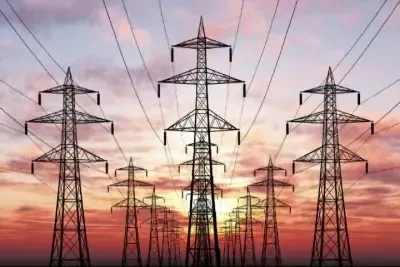Is Power Demand Growth Expected to Be Around 2% This Fiscal Year Due to Early Monsoon?

Synopsis
Key Takeaways
- Electricity demand growth is projected at 1.5-2% for FY26.
- Early monsoon and high base effect are influencing demand.
- India's power capacity addition has reached 25.7 GW in H1 FY25.
- Renewable energy is driving significant capacity growth.
- Coal inventory levels indicate a stable supply situation.
New Delhi, Nov 25 (NationPress) The demand for electricity is projected to increase by 1.5–2 percent in FY26, a reduction from the previous forecast of 4–4.5 percent. This change is attributed to the early monsoon and a high base effect, according to a report released on Tuesday.
The ratings agency ICRA reported that India has doubled its power capacity addition in the first half of FY25 to 25.7 GW, primarily driven by the renewable energy sector. The nation is expected to achieve a total of 45-50 GW in power capacity for the current fiscal year.
According to data from the Power System Operation Corporation (POSOCO), India’s electricity demand saw a 3 percent drop year-on-year in the initial ten days of November 2025.
“The early and extended monsoon, along with a high base effect, has resulted in muted demand growth for FY2026, showing overall flat growth during the first seven months. Consequently, the full-year demand growth prediction has been adjusted, although some seasonal recovery is expected during winter,” stated Ankit Jain, Vice President & Co Group Head - Corporate Ratings, ICRA Ltd.
The surge in India’s power capacity was primarily fueled by the renewable energy (RE) segment. Developers are hurrying to finalize projects before the transmission charge waiver expires on June 30, 2025.
With a robust pipeline of RE projects, the total capacity addition for FY2026 is anticipated to reach approximately 45-50 GW, significantly surpassing FY2025's levels.
Coal inventories at power plants have risen to 16.6 days as of November 10, compared to 15.6 days at the end of October. Although stocks are slightly below normative levels due to monsoon-related mining disruptions, they are higher than the levels recorded in September 2024 and September 2023, indicating a relatively stable supply situation.
On November 10, average spot power tariffs on the Indian Energy Exchange were noted at Rs 3.1 per unit, which is an increase from Rs 2.7 in October but lower than Rs 3.3 in November 2024, reflecting subdued demand alongside increased renewable generation.









